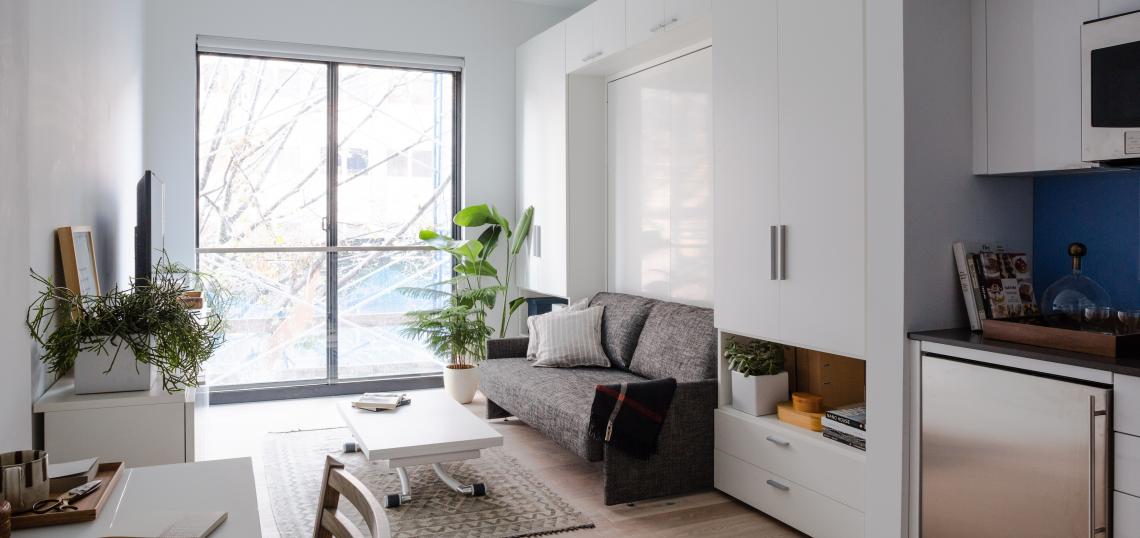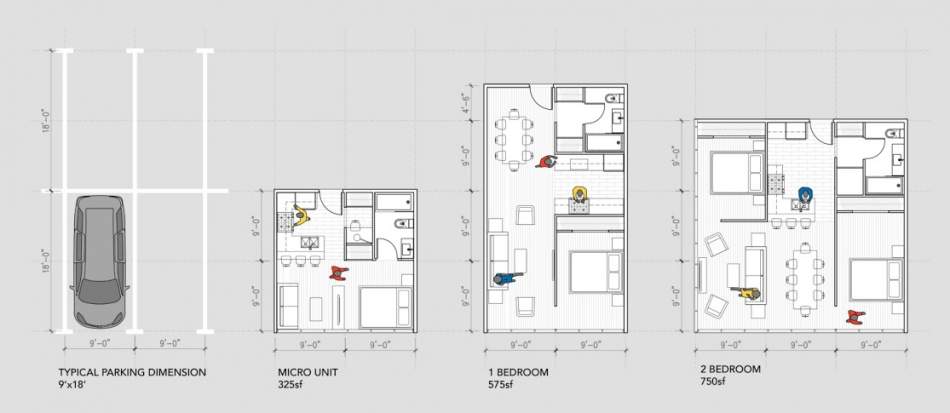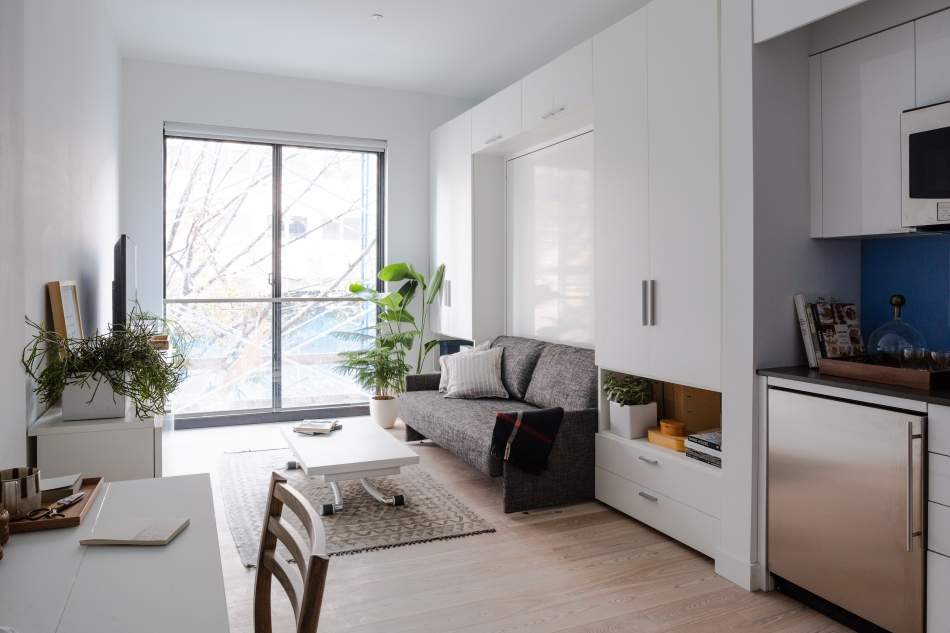In a county facing a shortage of a million housing units, how can we provide more affordable housing, be more welcoming to families, and boost transit ridership in our urban centers? For all three, the answer comes in a small package: micro-units.
Micro-units are apartments as small as 140 square feet and as large as 350, and they take a variety of forms. They can include shared-living arrangements or be entirely self-contained with bathrooms, full kitchens, and even in-unit washers and dryers. They can be amenity-rich or relatively barebones. And they can play a critical role in L.A.’s response to the housing crisis.
In Seattle, the national leader in housing, jobs, and population growth, approximately 5,500 micro-units were built in the four years between 2012 and 2015. Zillow’s rent index shows average rent prices in Seattle grew from $1,750 in 2012 to $2,620 today, but micro-units in the city’s most desirable neighborhoods can still be found for between $800 and $1,300. It’s one of the only unsubsidized housing options that has remained affordable in a city booming with high-paying tech jobs.
Los Angeles should be looking to build micro-units too, especially in highly transit-accessible urban centers like Downtown, Hollywood, North Hollywood, and Koreatown.
Beyond the need for more affordable housing options, there are many other reasons to support micro-units. One is about choice: Currently, units under 400 sq. ft. are almost unheard of in Los Angeles, but not because people wouldn’t live in them. As we’ve seen in cities across the U.S. and around the world, many people will happily exchange a small amount of living space for lower rent, a more central location, and the opportunity to live on their own. We should give them that option.
Families also benefit from micro-units, even if they themselves won’t be living in them. Most of those applying to live in our limited supply of available 2- and 3-bedroom homes are not families; they’re groups of roommates — some of whom would choose to live alone if there were more affordable alternatives available. An Urban Land Institute survey from 2015 found that “ability to live alone” was one of the highest priorities of micro-unit tenants, after price and location. Micro-units offer all three. If we’re going to promote family-friendly development in our growing urban centers, we need complementary housing for singles, young people and retirees to take the pressure off larger units.
Finally, micro-units can help fill in some of the gaps in our urban fabric and increase transit ridership. Here in Downtown Los Angeles we have numerous surface parking lots between 8,000 and 15,000 sq. ft. that would be ideal for micro-unit developments. These sites, despite their proximity to Metro rail stations, have been devalued by the market because they’re too small to accommodate multiple levels of garage parking, a prerequisite for most development in L.A. today. The opportunity is ripe to turn these sites into affordable, parking-free micro-unit projects.
Eliminating parking from these buildings would reduce rents by upwards of $200 per month for each unit, and it would also attract car-free residents over those who need a place to store their vehicles. These residents are far more likely to walk, bike, and use transit for most of their trips, and they’re the type of residents who benefit most from living in an urban center.
The two largest hurdles to micro-unit development are density limits and parking requirements. Density limits incentivize larger units, and parking minimums devote too much space to cars: It’s nearly impossible to finance 300 sq. ft. apartments when each one has to be paired with 350 sq. ft. of parking. Downtown eliminated density limits in 2007, and with the recent approval of the Transit-Oriented Communities (TOC) guidelines, parking minimums have been eliminated for projects within 750 feet of a Metro rail station that provide on-site affordable housing. We need to expand these policies to more areas with high quality transit access, including neighborhoods outside Downtown.
Micro-units aren’t for everyone, but for many people they’re a perfect solution. For those in medical school internships and other demanding jobs, working 80 hours a week or more, an inexpensive place to sleep, shower, and store their things is all they need. Short-term leases offered by some micro-unit projects can allow new arrivals to explore the city before committing to a year-long lease elsewhere, or deciding to stay where they’re at. And some people simply prefer to spend most of their time outside their home — to treat the city as their living room — and that’s okay too.
We look forward to developers taking the leap with some of the first micro-unit buildings in the city, and hope that our civic leaders will continue to promote further innovation. New housing typologies, building materials, and construction techniques can all help create a more functional and affordable housing market, and micro-units will no doubt play an essential role in that effort.
Jessica Lall is the President and CEO of Central City Association, a membership-based advocacy organization focused on enhancing the vibrancy of Downtown Los Angeles. CCA recently published a white paper promoting micro-units in L.A. which can be found at www.ccala.org/microunitwhitepaper.








